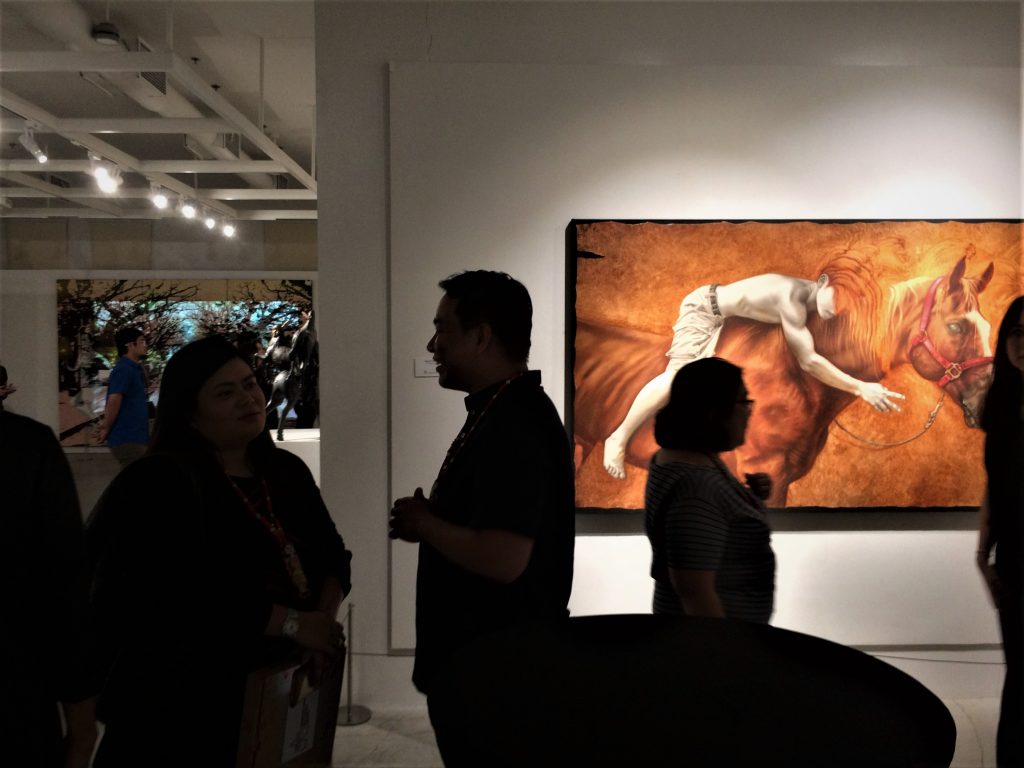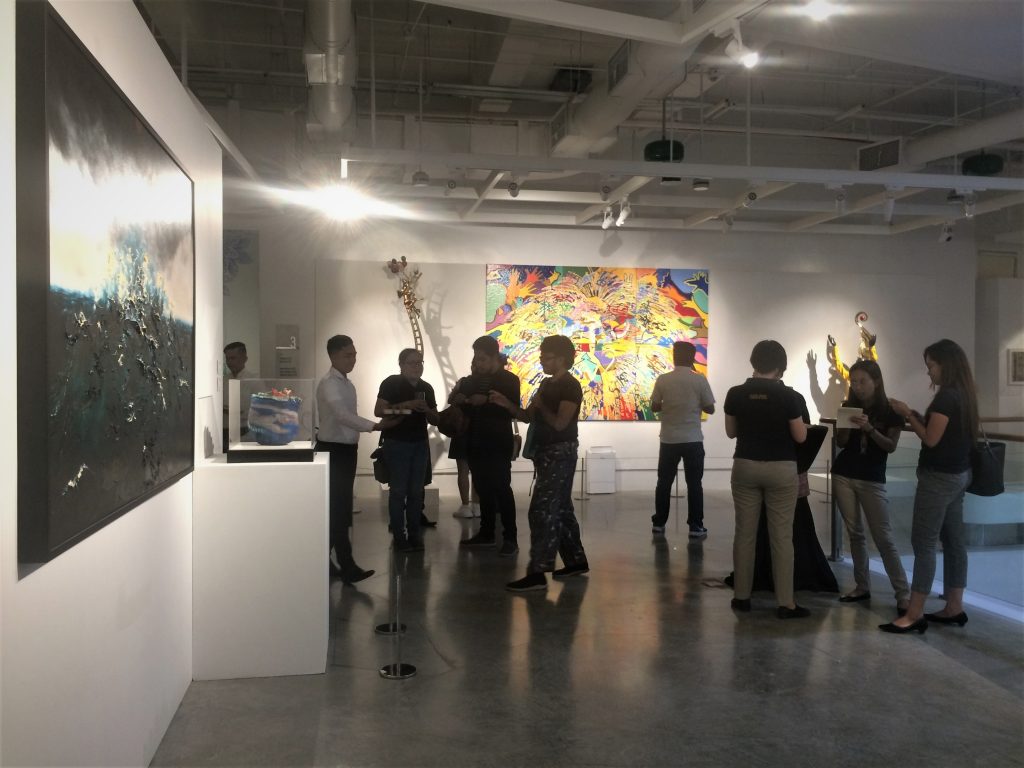Allyn May Canja and myself were chatting on messenger and we were trying to recall when was the first time that we got acquainted with each other.
Our memory transported us back to some 10 years or more ago. Allyn May Canja was one of the student leaders of an environmental youth alliance called Iloilo Students Alliance for Nature and Development or I-Stand.
I-Stand was among those groups who highlighted the impacts of climate change, an issue not too popular then unlike today. We also worked on-and-off together in an artists’ collective Dakila – perhaps one of the closest encounters that we associated ourselves with the arts.
Interestingly, Allyn May Canja is now the museum officer of the Iloilo Museum of Contemporary Art, an icon that symbolizes the aspirations of the Ilonggo art sector to become a center of the arts in the Visayas. We have known her as a lowkey person but with the fondness that she can push forward the mission and vision of ILOMOCA to be a relevant institution to the Ilonggo community.
“I joined ILOMOCA in October 2018 or eight months after it opened. But before that I was juggling between freelancing and graduate studies,” said Allyn May Canja or Allyn as she is called among peers.

Allyn, however, have always preferred a job that will allow her to exercise her creativity. “I grew up in a generation who believes that we can be anything that we want to be,” she expressed “but I guess the option is quite limited unless your start on your own in Iloilo.”
Nonetheless, the opportunity to work for the art sector arrived while she was at the thick of writing projects. “I was writing about climate stories, pop culture, poetry and art. I was trying to write just about anything to shape up a portfolio,” she recalled. But the ‘creative job’ that she was longing for all these years presented itself when she responded to a career posting by ILOMOCA.
Although she sacrificed graduate studies, things seemed to have fallen gracefully on its rightful place and she is now the person who manages the day-to-day work, exhibitions, and community engagements of the museum.
I honestly thought that you will become a university professor or an environmental lawyer. I guess you’re a fine arts major?
I studied BS Information Technology at West Visayas State University. For some reason that is lost to me now. I had an existential crisis and I ended up having a graduate study. Ironically, all of my academic experiences are not entirely related to art.
How did you end up in the art sector?
It started going to art shows sometime in 2010. I remember one particular exhibit at FDCP’s Cinematheque which fused poetry and art. I was invited by friends to read a poem. It was a period when young persons of my age were slowly gaining interest in art.
We were mainstays at the Cinematheque then and we’d go to shows, film fests and workshops whenever we have the time. In 2016, when Iloilo hosted VIVA ExCon they needed members to work for the committees and I became one of those who accepted a task. We did a year-long fundraising for the biennale through the former Casa Real Gallery.
Tell us what is the work of Allyn May Canja as a Museum Officer?
I am part of the team who initiates the museum programs and exhibitions. We have an Art Committee that gives the overall approval but the ideas originates from the ground. It is important that the happenings in the museum is relevant to Iloilo and that the efforts are also within the context of Western Visayas. Our main task is to connect the museum to the community and the Megaworld Corporation does a valuable job supporting this.
Can you share to us what is the difference between a museum coordinator and a curator?
A curator is the one who arranges artworks for an exhibition. In cultural work, however, a curator does more than that – they create concepts and they communicate the concept to the artists, and eventually to the audience of the exhibition. In addition, a curator’s main job includes taking care of the ideas, the artists, art and the overall exhibition.

I remember we had some discussion about what art is. Can you tell us what is art?
Well, the discussions we’ve had covers art history. I believe the only effective way of viewing what art is would be through time. But I usually quote Reinhardt’s definition of art and it says: “Art is art, everything else is everything else” because we tend to romanticize its definition as something that is so abstract. At the end of the day, however, we have to simply look at it in black and white and accept that art is a diverse range of creations. Only then, we allow art to thrive and make it more accessible.
One frequently asked question is this – what is contemporary art?
When you enter ILOMOCA, we have a LED board which flashes a definition of ‘contemporary art’ on its simplest form. It is art made in contemporary times. Some definitions other than that are subject for debate.
Can we consider all art pieces at ILOMOCA as a contemporary art?
From the definition alone, I’d say yes.
The museum has a lot activities. How many of your ideas for ILOMOCA got materialized so far?
Most of the activities for the museum is a product of a team effort. We have a team in Iloilo and we work in coordination with a Manila team. It’s hard to count ideas and put all the credit to one person. We normally process the types of campaign through brainstorming. The process includes identifying the brands that we will partner with and how we can align the identity of ILOMOCA with other museums around the world.
From my end in particular, I am campaigning for regionalism and I’m grateful that the team is supportive of it. For the last quarter of this year ILOMOCA will implement programs which focuses on local culture.
Also Read: ILOMOCA hangs an all-female art at AV Gallery
For Hulot Gallery alone, how many exhibits are programmed by ILOMOCA annually?
This year, we have programmed 12 exhibits for Hulot Gallery. The goal is to have exchanging exhibitions every month so that we can maximize the space to show artworks of different artists.
How does ILOMOCA select the artists who can make an exhibit at the gallery?
The exhibitions for Hulot Gallery are selected from the proposals that we receive from the artists. We are recognized as a venue supportive of local artists and we want to continue doing that and to maintain exhibitions that carry the vision of ILOMOCA.
I’m quite certain that you too have a favorite artist?
Yes, I do have a lot of favorite artists. Right now, I really admire the works of Geraldine Javier because of her experimentation in the medium and the themes of her works. I also love how the works of Marina Cruz, which are almost abstract, very minimalist, and it evokes nostalgia. There is a comforting familiarity on the images.
Who among the Ilonggo artists do you watch out for?
This is a difficult part but for a very personal reason, I watch out for Kristoffer Brasileño. (laughs…)
(The popular Ilonggo artist and art teacher Brasileño is a partner of Allyn May Canja)
Any art piece you particularly like among ILOMOCA’s collection?
The exhibition: “Color, Surplus, Skill” features an artwork by Vincent Navarro. It’s almost like a flat lay of foods which are often associated with the masses. But if you pay attention on the table and the trays, you will notice the contrast between the food and its background. You need to see it for you to know what I’m pointing out. It’s an amazing composition.
Do you keep a personal art collection?
Yes. Mostly works of young artists.
Any artist that you look up to?
I’m looking up to a lot of cultural workers especially the ones that I have worked with and because they play a significant role in maintaining the arts and culture community. Among them: Ricky Francisco of Fundacion Sanso who is an outstanding curator and museum director; Maricel Montero of Museo Pambata who created an impact on the lives of children of Manila; Janine Cabato, the hardworking director of the Megaworld-owned Chinatown Museum in Binondo; Daniella Caro of Cinemateque Iloilo who practically devoted her time in helping the Ilonggo film community; and Noel de Leon of the Kasingkasing Press who has helped shaped a movement of Ilonggo writers. I consider them as the fabric that holds the community together.
I’m sure that you also have a bucket list when it comes to art destination. Any museum, gallery, art event, or artwork that you want to visit outside of the Philippines?
None, really. Although, I think the Venice Biennale is an ideal one. I also like to walk back in the 50s to 80s San Francisco.
People have an impression that you live and breathe art because you have an artist as a partner and you work in an art museum. How interesting is the life of someone like you?
We often romanticize the lives of artists but art is just like any other vocation. On weekends, Kris spends time in his studio, I spend time on my desk. Our cats are probably the only ones who find our lives interesting because they seem to always follow us.
Apart from your museum work, what engagements that you are looking forward of doing in the future?
My work at ILOMOCA requires 24/7 attention because of the range of work that needs to be done. My time for personal activities are limited, but if given the time, I would love to work on my writing again.
